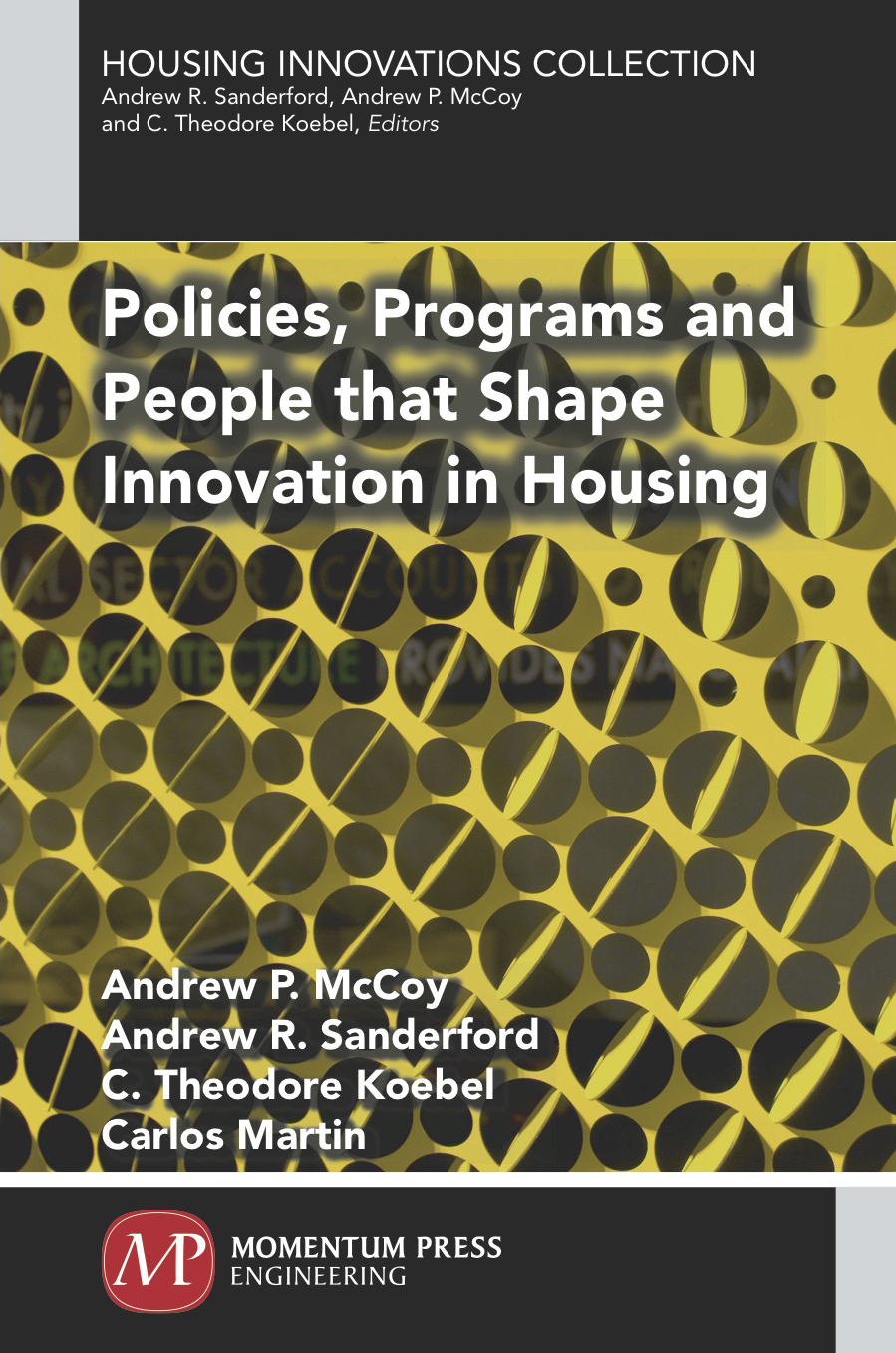Virginia Center for Housing Research explores housing innovation in new book

Researchers from the Virginia Center for Housing Research and the Urban Institute have taken a leading-edge look into innovation in the housing industry, conducting a new in-depth statistical analysis in this area of the industry. Their findings are described in a new book from Momentum Press, “Housing Innovation: The Policies, Programs, and People that Shape Innovation in Housing, 1990-2013.”
The research and book were completed by Andrew P. McCoy, the Preston and Catharine White Fellow, assistant director of the Myers-Lawson School of Construction, and director of the Virginia Center for Housing Research; Andrew R. Sanderford, assistant professor in the College of Architecture, Planning, and Landscape Architecture at the University of Arizona; C. Theodore Koebel, senior advisor for the Virginia Center for Housing Research and professor in Virginia Tech's Department of Urban Affairs and Planning; and Carlos Martin, senior research associate in the Metropolitan Housing and Communities Policy Center at the Urban Institute.
The authors said they hope the book will introduce practitioners, researchers, and regulators to innovation in U.S. housing and the history of federal interventions in housing innovation. The authors highlight the people, policies, and programs that shaped recent building technologies.
The book provides a summary and framework of the commercialization pathway for new residential construction technologies and describes the stakeholders in that process.
McCoy said, “This is the first time that the housing industry can statistically model the effect of local market characteristics on the spread of technologies. Diffusion models have been used in construction and housing, but not with housing technologies at a local market level; so this is our stamp on the housing industry.”
This book sets the foundation for a series of books, the Housing Innovation Collection, that look at other ways that innovation is working in housing, such as safety innovation, commercialization, and how innovation spreads internationally.
“The U.S. develops the most technology in the housing industry, and much of the technology developed in this country spreads around the world, so we can use the American market to look statically at why a lot of these technologies are being chosen to be used here and how they might spread to other countries around the world.”
The next two books in the Housing Innovation Collection are planned for release this summer.




